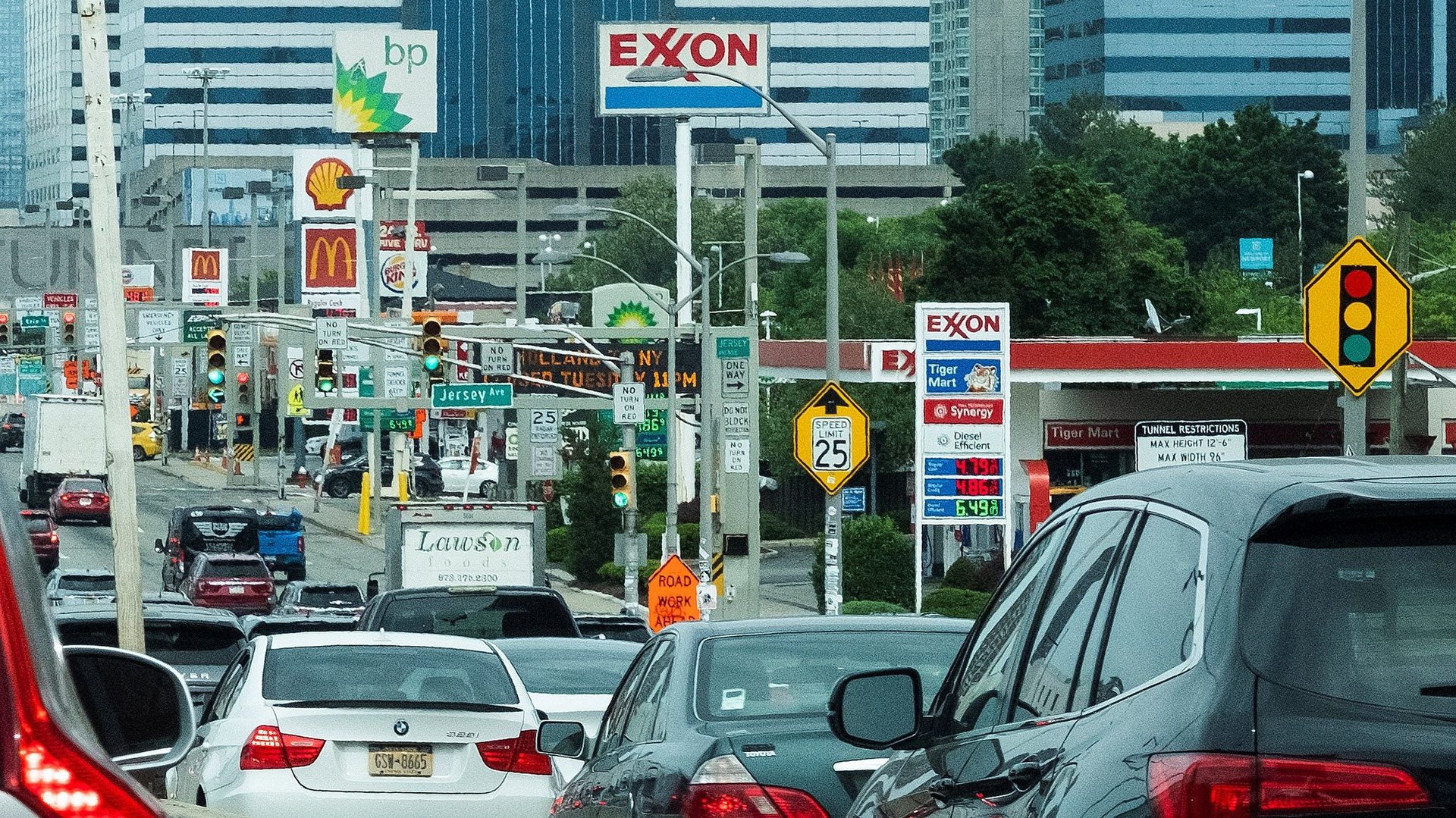Could $5 a gallon gas finally get Americans over EV sticker shock?
The average price of a gallon of regular gasoline in the US rose to $4.99 on June 10, according to AAA data. In 13 states, pump prices already broke the $5 per gallon barrier earlier this week.


The average price of a gallon of regular gasoline in the US rose to $4.99 on June 10, according to AAA data. In 13 states, pump prices already broke the $5 per gallon barrier earlier this week.
The threshold is a psychological one: While $5 isn’t the highest inflation-adjusted price Americans have ever paid for gasoline, for many US drivers, it’ll be the biggest number they’ve ever seen on their local gas station sign.
Gas price sticker shock appears to have prompted many Americans to research electric vehicles (EVs). Since the start of May, US Google searches for “electric car” are up by half and searches for “EV” are up by a third.
Americans’ awareness of EVs has never been higher. Automakers are investing steeply in developing new lines of electric cars and trucks and advertising their electric models heavily, including in high-profile Super Bowl spots. “Broader consumer awareness is really significantly increasing, and when you add that to things like price shock at the pump, it really makes people consider [switching to an EV] and start to get more information about how going electric can reduce their total costs,” said Peter Slowik, a senior researcher for EVs at the International Council on Clean Transportation.
“Historically speaking, when gas prices spike, there is a rush to get more fuel-efficient vehicles,” said Sara Baldwin, director of electrification policy at the Energy Innovation think tank. “Given that EVs are more available and there are more models out there now, I would expect we will see a similar trend both in pure electric vehicles and plug-in hybrid electric vehicles.”
EVs aren’t a short-term solution to higher prices at the pump
Automakers won’t be able to take full advantage of the increased consumer interest in EVs if they can’t produce enough electric cars to keep up with demand.
Like the broader auto market, EVs have been affected by supply chain problems, including disruptions in China. Although the country has eased out of hard lockdowns, life in major cities including Beijing, Tianjin, and Shanghai is still not back to normal. Tesla had to shut down its gigafactory in Shanghai for 22 days in April, before transitioning to a closed-loop system in which workers sleep on-site at the plant. (Workers will be allowed to go home June 11.)
Meanwhile, demand for all cars has been exceeding supply. With fewer new cars to go around in the US, sales are expected to fall by more than 20% in May.
EVs are more expensive than gas-powered cars
The biggest barrier to buying an electric car is its price tag. Nearly two in three US car buyers said they wouldn’t consider buying an EV at current prices in a November poll of 5,000 US car buyers. EVs usually come with a higher sticker price than gas-powered cars (even though most EVs are cheaper to own than similar gas-powered cars, once you factor in tax incentives and the lifetime cost of fuel and maintenance).
Automakers have focused their early EV offerings on the luxury market, pushing the average US sale price for an electric car up to nearly $66,000 in March. In comparison, the average price for all new cars in the US was roughly $46,000 that month.
For now, there’s enough demand from wealthy Americans interested in buying an electric car that automakers like Tesla and Rivian have months- or years-long backlogs of EV orders. But if the industry hopes to welcome in price-stressed drivers who are considering ditching their combustion engine cars because of high gas prices, automakers will need to roll out more affordable EV models and scale up their production quickly.